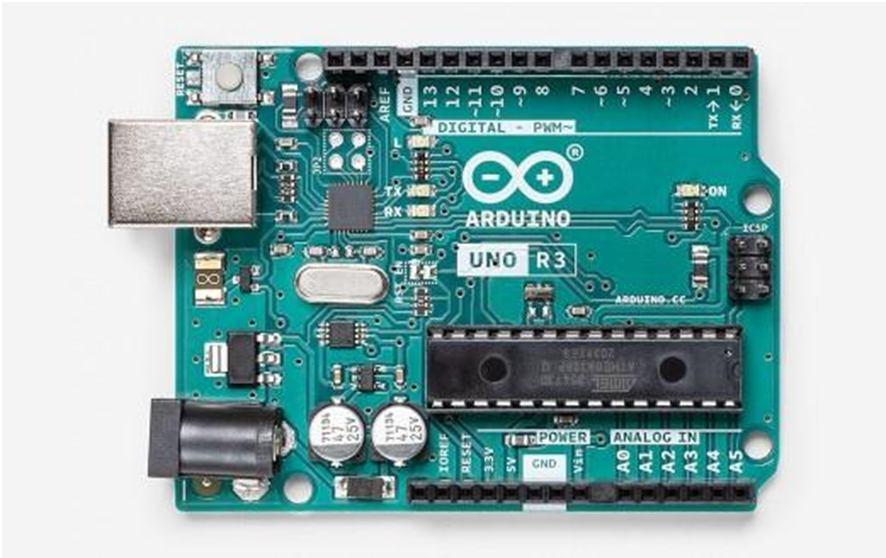International Journal for Research in Applied Science & Engineering Technology (IJRASET) ISSN: 2321-9653; IC Value: 45.98; SJ Impact Factor: 7.538 Volume 10 Issue IV Apr 2022- Available at www.ijraset.com 2) Components Details The given below is the detailed information of the components used in this project. a) Arduino UNO Rev3: The Arduino Uno is a microcontroller board that uses the ATmega328P microprocessor (datasheet). It contains 14 digital input/output pins, 6 analogue inputs, a 16 MHz ceramic resonator (CSTCE16M0V53-R0), a USB connection, a power connector, an ICSP header, and a reset button. It comes with everything you'll need to get started with the microcontroller; simply plug it into a computer with a USB connection or power it with an AC-to-DC converter or battery. You may experiment with your Uno without fear of making a mistake; in the worst-case situation, you can replace the chip for a few dollars and start over..
Figure 2: Arduino UNO Rev3 b) Ultrasonic Sensor: An ultrasonic sensor is an electronic device that emits ultrasonic sound waves and converts the reflected sound into an electrical signal to determine the distance between a target object and the sensor. Ultrasonic waves travel at a quicker rate than audible sound, which humans can hear. Ultrasonic sensors, as their name suggests, use ultrasonic waves to determine distance. The sensor head sends out an ultrasonic wave, which is reflected back to the sensor head. By monitoring the duration between emission and reception, ultrasonic sensors can determine the distance to the target.
Figure 3: Ultrasonic Sensor c)
IR Sensor: The term "infrared" refers to a beam of infrared light which is used to detect the presence of an object. It works in the same way as ultrasonic sensors, but instead of using sound waves, it sends out infrared signals. Infrared proximity sensors have an IR LED that emits light and a light detector that detects reflected light. It has a signal processing circuit integrated in that determines an optical spot on the PSD. The IR LED emitter produces infrared light. When a beam of light strikes an object, it is reflected at an angle. The light detector will receive the reflected light. The position/distance of the reflected object is determined by the sensor in the light detector.
Figure 4: IR Sensor
©IJRASET: All Rights are Reserved | SJ Impact Factor 7.538 | ISRA Journal Impact Factor 7.894 |
2195


